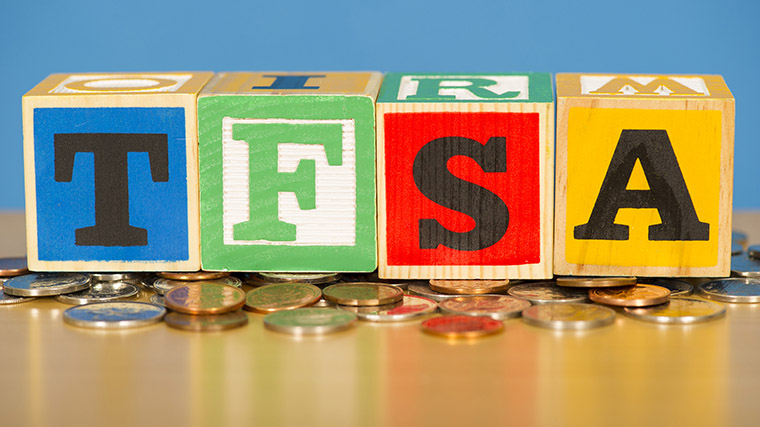Minds On
Savings Accounts and Interest Rate

When a customer places their money in a savings account, they are lending money to the bank. For every dollar that they lend or rent to the bank, the bank will agree to pay them a portion of that amount each year. The amount paid back to them is called interest, and the amount of interest is based on the interest rate.
Brainstorm
Three ways a customer can make more interest include:
- investing a large amount of money (e.g. $5,000.00 instead of $2,000.00)
- securing a higher interest rate
- investing money for a longer period of time (e.g. five years instead of two years)
Action
Interest Rates
Traditional savings accounts offer lower interest rates, usually less than 1%. Banks also offer specialized high interest accounts. A Tax-Free Savings Account (TFSA) or a Registered Retirement Savings Plan (RRSP) are two examples. These accounts may align more closely with short-term and long-term savings goals.
Banks may have special limited time offers to attract customers. For example, a 1.50% interest rate on a TFSA account may be available for a short time to entice new customers.
Simple Interest Formula
Simple interest is calculated using a formula that considers the amount borrowed, the rate, and
the length of time the money is borrowed.
I = P × R × T
Where:
I = the interest created in dollars
P = the principal or starting amount
R = the interest rate per year (in decimal form)
T = the time the money is invested or borrowed, in years
Example: If a teen is 18 years of age in Canada and added $6,000 to the account (the 2020 maximum contribution) to a Tax-Free Savings Account, their annual interest earned would be,
I = $6,000 × 0.015 × 1
I = $90
Therefore, the annual interest earned would be $90.
Tax-Free Savings Account (TFSA)

A Tax-Free Savings Account (TFSA ), first introduced in 2009, is a savings account option that is open to individuals who are 18 years of age or older. This account allows for money to be set aside tax-free throughout their lifetime.
Contributions to a TFSA are not deductible for income tax purposes unless contributions exceed the yearly limit. Any amount contributed and any income earned in the account is tax-free, even when withdrawn. The yearly contribution limit is set by the government, and can change year to year. Contribution limits have been set anywhere between $5,000 and $10,000, depending on the year.
It is important to note that everyone should document their contribution amounts to ensure that they do not exceed these amounts. If they do exceed their contribution limit, they will be charged 1% of the highest excess amount each month.
Excess Contribution Scenario
A Canadian resident who is 43 years old opened a TFSA in 2009, and contributed the maximum amount each year for a total of $52,000 by the end of December 2017. In 2018, they made the following contributions and withdrawals:
- contribution on January 16 = $5,000
- contribution on March 1 = $500
- contribution on June 5 = $3,500
- withdrawal on October 2 = $800
Their contribution room for 2018 was $5,500, but as noted above, they went into excess of $3,500 on June 5. On that date, their total contributions in 2018 were $9,000 (total is calculated by adding the contributions $5,000 + $500 + $3,500). As of June 5, they had an excess amount of $3,500 in their TFSA ($9,000 of total contributions minus $5,500 of contribution room).
This resident now has to pay tax on their excess contributions. This tax is 1% of the highest excess TFSA amount each month.
Calculate what the resident will owe based on their excess contributions per month for 2018. Keep their withdrawal amount in mind as this will affect their excess contribution for November and December of that year.
If you would like, you can complete the next scenario using TVO Mathify. You can also use your notebook or the following fillable worksheet.
Press the ‘TVO Mathify' button to access this resource and the ‘Activity’ button for your note-taking document.
TVO Mathify (Opens in new window) Activity (Open PDF in a new window)Calculating Interest Earned on a TFSA
On January 4, 2020, a student decided they would like to open up a Tax-Free Savings Account. The student turned 18 on December 21, 2015, and is therefore eligible to make contributions for the years 2015 to 2020. The contribution limits for those six years are:
- 2015 = $10,000.00
- 2016 = $5,500.00
- 2017 = $5,500.00
- 2018 = $5,500.00
- 2019 = $6,000.00
- 2020 = $6,000.00
The student deposits their maximum contribution limit of $33,000.00 upon opening the account.
If their bank offers a 2.10% interest rate for the first five months, and 0.10% thereafter, how much interest will they have earned after one year?
Note: the variable T in the simple interest formula is in years, but this question refers to months. You will need to calculate the interest in two parts. The first calculation will use T = 5 / 12 (5 months divided by 12 months) and the second calculation will use T = 7 / 12 (7 months divided by 12 months).
If you would like, you can complete the next word problem using TVO Mathify. You can also use your notebook or the following fillable and printable document.
Press the ‘TVO Mathify' button to access this resource and the ‘Activity’ button for your note-taking document.
TVO Mathify (Opens in new window) Activity (Open PDF in a new window)Consolidation
Calculating simple interest
In the Action section we learned that simple interest is calculated using a formula that
considers the amount borrowed, the rate, and the length of time the money is
borrowed.
I = P × R × T
Where:
I = the interest created in dollars
P = the principal or starting amount
R = the interest rate per year (in decimal form)
T = the time the money is invested or borrowed, in years
Let’s use this information to solve the following problem.
Interest on a loan

Student A has decided that they want to open their own small business of a pop-up bakery. They need to take out a loan of $40,000 to get them started. The bank offers them a 5% simple interest rate for 5 years.
Answer the following questions in your notebook or using another method of your choice.
- What is the total amount of interest Student A will have to pay over the 5 years?
- What is the total amount of money Student A will have to pay the bank at the end of the 5 years?
If possible, share your thinking with a partner.
Reflection
As you read the following descriptions, select the one that best describes your current understanding of the learning in this activity. Press the corresponding button once you have made your choice.
I feel...
Now, expand on your ideas by recording your thoughts using a voice recorder, speech-to-text, or writing tool.
When you review your notes on this learning activity later, reflect on whether you would select a different description based on your further review of the material in this learning activity.
Connect with a TVO Mathify tutor
Think of TVO Mathify as your own personalized math coach, here to support your learning at home. Press ‘TVO Mathify’ to connect with an Ontario Certified Teacher math tutor of your choice. You will need a TVO Mathify login to access this resource.
TVO Mathify (Opens in new window)